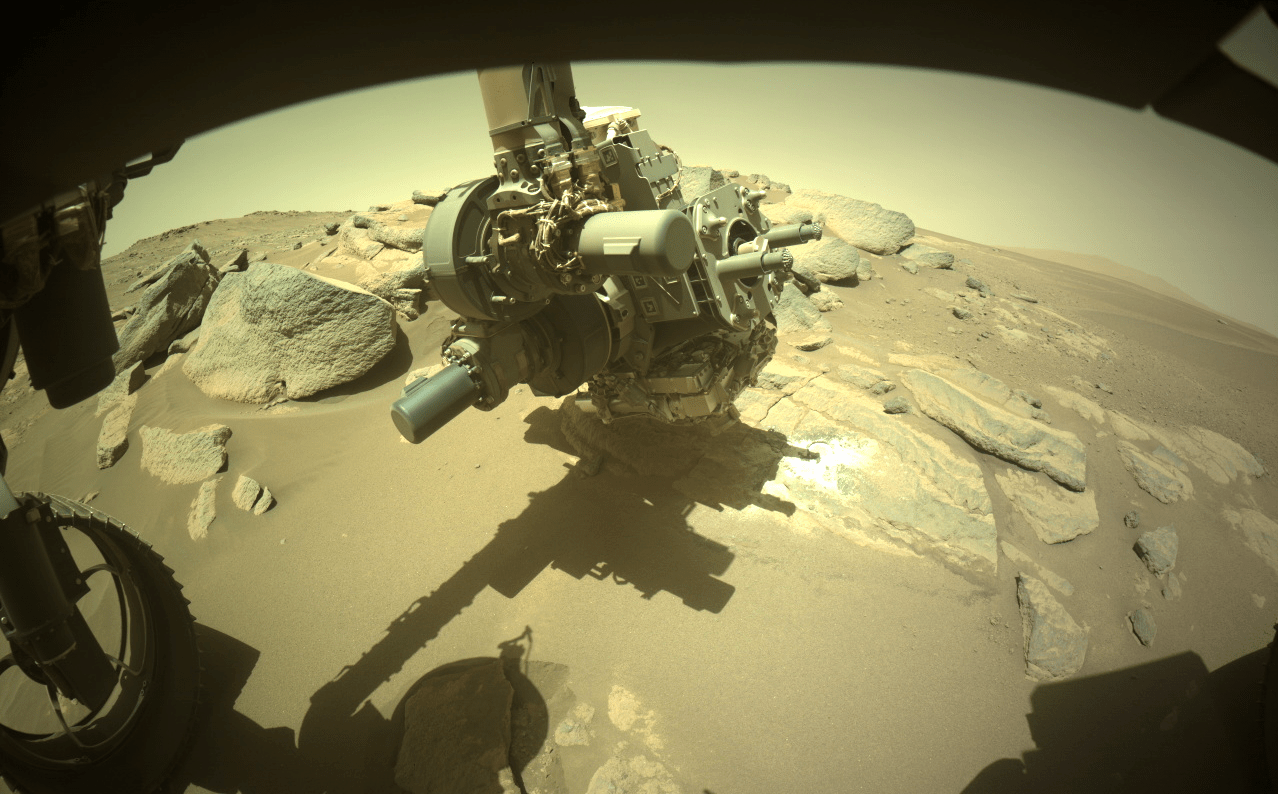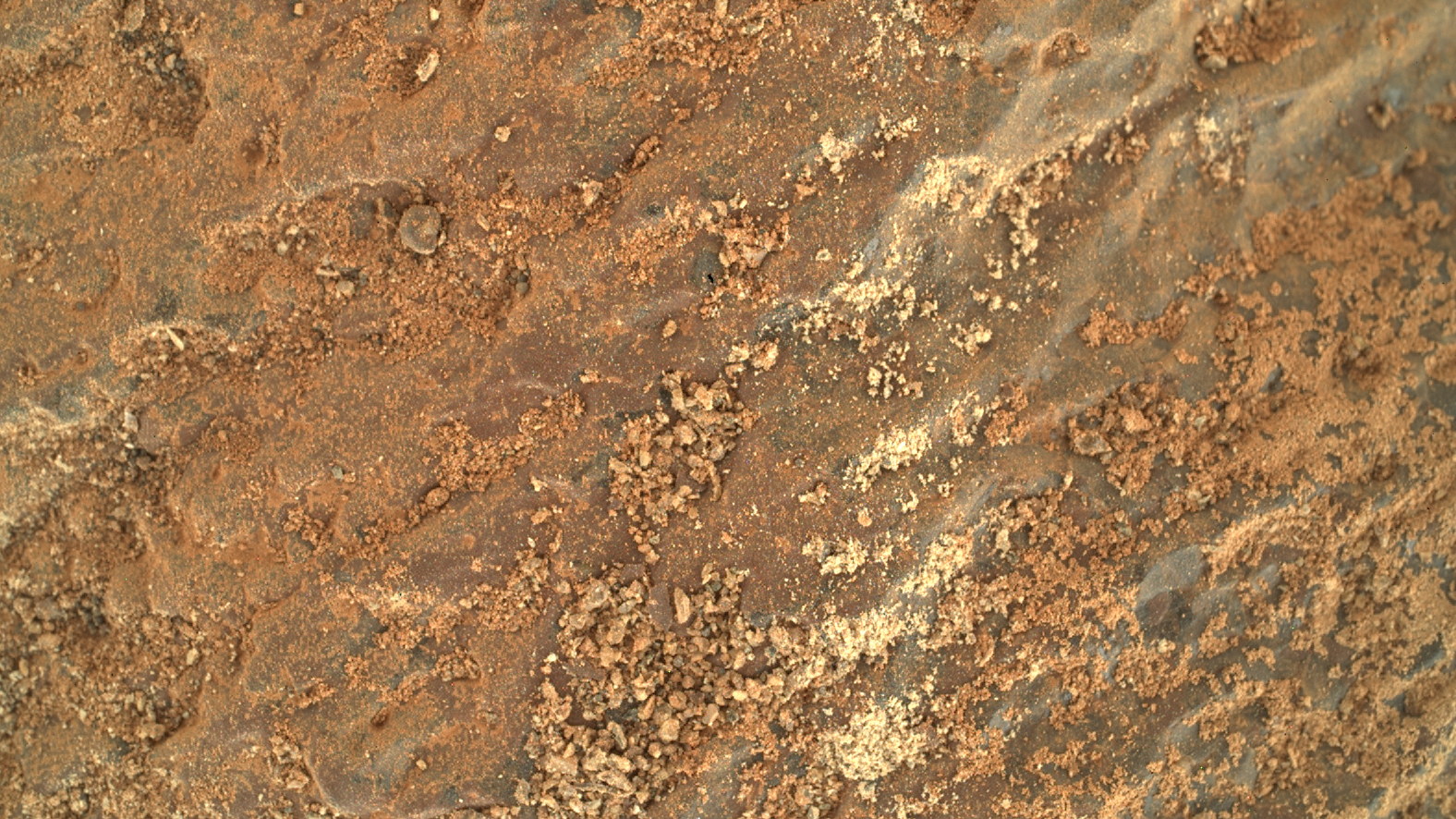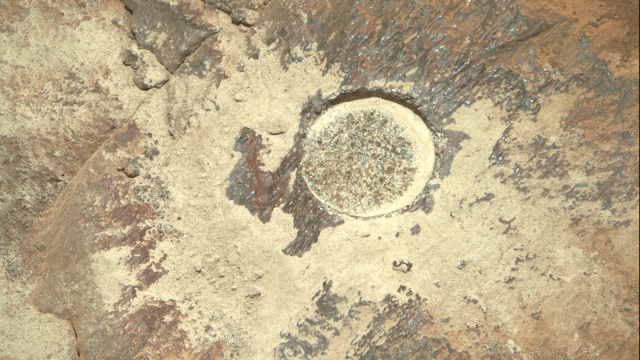It’s been nearly nine months since the Perseverance rover landed in Jezero Crater, a dried-up lake bed on Mars. Since then, its science mission has reached full swing, with the rover now scouring the Red Planet’s surface for interesting rocks to sample. Just this week, it exposed a circular patch of rock that had never before seen the hazy light of Martian day.
Perseverance is looking for rock formations that could reveal Mars’s geologic history and, potentially, evidence that life once existed there. The far-out idea is that, if anything once lived on Mars, it would’ve been when liquid water flowed on the surface. Recently, scientists have learned that at least some of the rocks in Jezero are igneous, meaning they came from the planet’s interior, and early findings indicated the lake in Jezero experienced violent flash floods in its ancient past.

Ultimately, the rover is headed for Jezero’s western edge, where a river delta once fed into the lake. That’s where scientists think any microfossils are most likely to be found, based on where such microbes tend to set up shop on Earth.
If recent social media postings are anything to go by, the rover’s really loving its job. Last month it swung by a couple of large rock outcrops, and last week it appreciated some pretty layered rocks. Yesterday, the rover’s team announced they’re getting closer to choosing the next target for sampling.

The rover samples rock by picking a location and abrading a circular patch of it, thereby revealing a part that hasn’t been exposed to the elements. Then, it cores that rock and stores the sample within its car-sized frame. Its lazy Susan-like repository for Martian rock will, hopefully, be brought to Earth in the future, probably sometime around 2030.
Once the samples are on Earth, scientists will be able to study them in much more detail than anything they’re able to glean from millions of miles away. The first rock sample had a false start, but NASA scientists were able to collect a sample on their second attempt.
Currently, the rover is to the southeast of its landing site, on the outskirts of the South Séítah region of Mars, which is a pretty tricky series of sand dunes and ridges that can be hard for a rover to navigate. (That’s part of the reason it’s been nice for NASA to use the Ingenuity helicopter as a scout; it can view rocks from above that Perseverance can’t get near.)
The Perseverance mission is planned to last a Martian year, or 687 Earth days. If previous rover lifetimes are anything to go off of, though, we may be blessed with many years thereafter. Hopefully it’s enough time for the rover to find something truly mind-blowing in that dusty crater.
